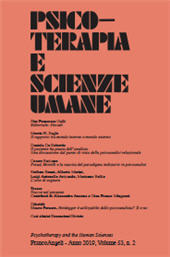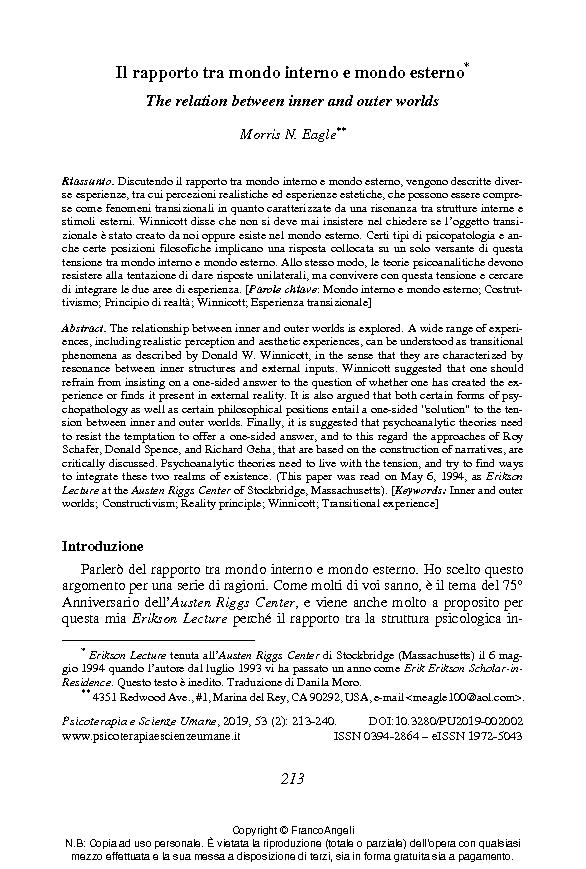Il rapporto tra mondo interno e mondo esterno
213-240 p.
Discutendo il rapporto tra mondo interno e mondo esterno, vengono descritte diverse esperienze, tra cui percezioni realistiche ed esperienze estetiche, che possono essere comprese come fenomeni transizionali in quanto caratterizzate da una risonanza tra strutture interne e stimoli esterni. Winnicott disse che non si deve mai insistere nel chiedere se l'oggetto transizionale è stato creato da noi oppure esiste nel mondo esterno. Certi tipi di psicopatologia e anche certe posizioni filosofiche implicano una risposta collocata su un solo versante di questa tensione tra mondo interno e mondo esterno. Allo stesso modo, le teorie psicoanalitiche devono resistere alla tentazione di dare risposte unilaterali, ma convivere con questa tensione e cercare di integrare le due aree di esperienza. [Testo dell'editore]
Abstract. The relationship between inner and outer worlds is explored. A wide range of experiences, including realistic perception and aesthetic experiences, can be understood as transitional phenomena as described by Donald W. Winnicott, in the sense that they are characterized by resonance between inner structures and external inputs. Winnicott suggested that one should refrain from insisting on a one-sided answer to the question of whether one has created the experience or finds it present in external reality. It is also argued that both certain forms of psychopathology as well as certain philosophical positions entail a one-sided "solution" to the tension between inner and outer worlds.
Finally, it is suggested that psychoanalytic theories need to resist the temptation to offer a one-sided answer, and to this regard the approaches of Roy Schafer, Donald Spence, and Richard Geha, that are based on the construction of narratives, are critically discussed. Psychoanalytic theories need to live with the tension, and try to find ways to integrate these two realms of existence. (This paper was read on May 6, 1994, as Erikson Lecture at the Austen Riggs Center of Stockbridge, Massachusetts). [Publisher's text]
Is part of
Psicoterapia e scienze umane : LIII, 2, 2019-
Articles from the same issue (available individually)
-
Information
ISSN: 1972-5043



